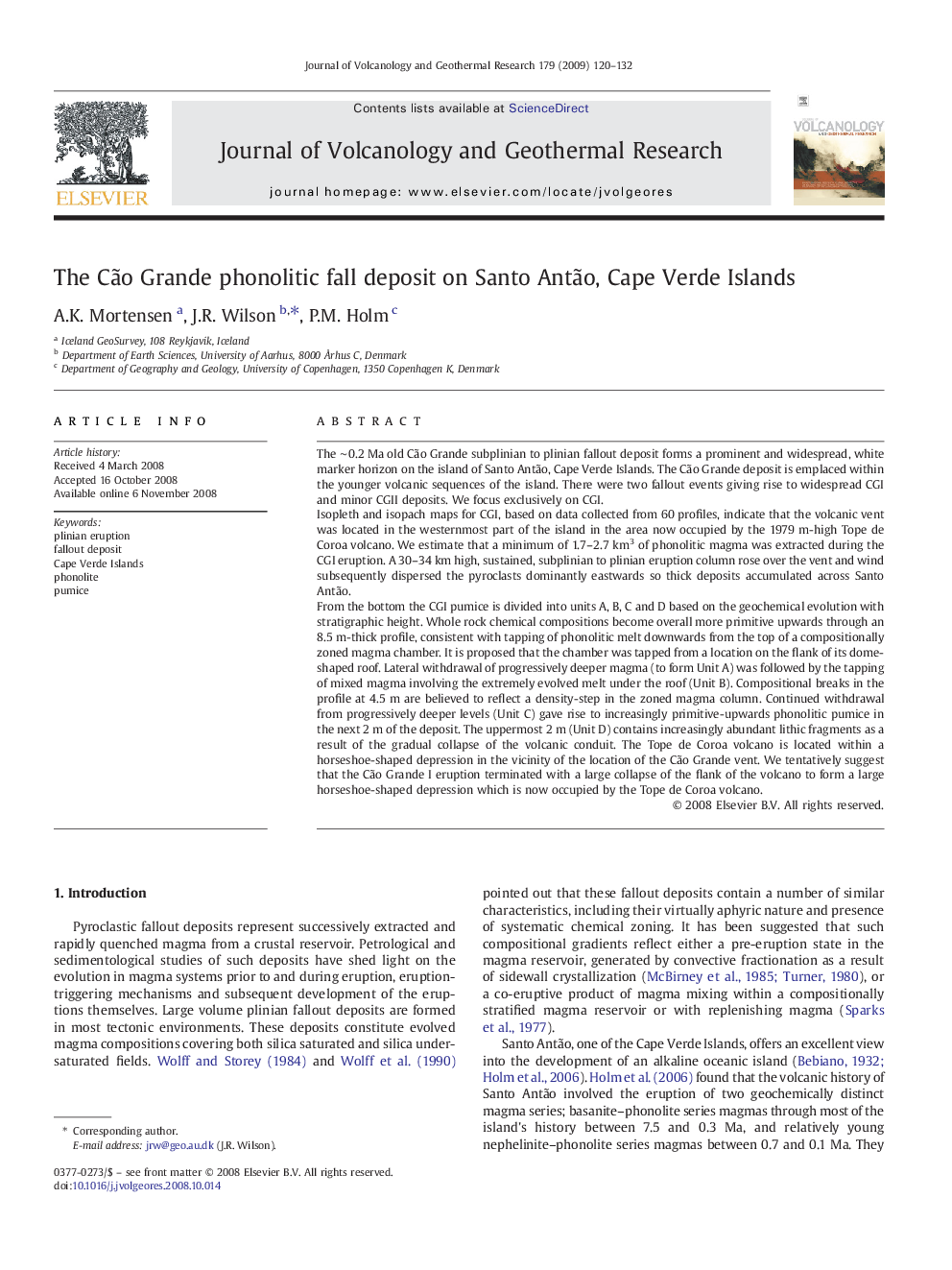| کد مقاله | کد نشریه | سال انتشار | مقاله انگلیسی | نسخه تمام متن |
|---|---|---|---|---|
| 4714508 | 1638444 | 2009 | 13 صفحه PDF | دانلود رایگان |

The ∼ 0.2 Ma old Cão Grande subplinian to plinian fallout deposit forms a prominent and widespread, white marker horizon on the island of Santo Antão, Cape Verde Islands. The Cão Grande deposit is emplaced within the younger volcanic sequences of the island. There were two fallout events giving rise to widespread CGI and minor CGII deposits. We focus exclusively on CGI.Isopleth and isopach maps for CGI, based on data collected from 60 profiles, indicate that the volcanic vent was located in the westernmost part of the island in the area now occupied by the 1979 m-high Tope de Coroa volcano. We estimate that a minimum of 1.7–2.7 km3 of phonolitic magma was extracted during the CGI eruption. A 30–34 km high, sustained, subplinian to plinian eruption column rose over the vent and wind subsequently dispersed the pyroclasts dominantly eastwards so thick deposits accumulated across Santo Antão.From the bottom the CGI pumice is divided into units A, B, C and D based on the geochemical evolution with stratigraphic height. Whole rock chemical compositions become overall more primitive upwards through an 8.5 m-thick profile, consistent with tapping of phonolitic melt downwards from the top of a compositionally zoned magma chamber. It is proposed that the chamber was tapped from a location on the flank of its dome-shaped roof. Lateral withdrawal of progressively deeper magma (to form Unit A) was followed by the tapping of mixed magma involving the extremely evolved melt under the roof (Unit B). Compositional breaks in the profile at 4.5 m are believed to reflect a density-step in the zoned magma column. Continued withdrawal from progressively deeper levels (Unit C) gave rise to increasingly primitive-upwards phonolitic pumice in the next 2 m of the deposit. The uppermost 2 m (Unit D) contains increasingly abundant lithic fragments as a result of the gradual collapse of the volcanic conduit. The Tope de Coroa volcano is located within a horseshoe-shaped depression in the vicinity of the location of the Cão Grande vent. We tentatively suggest that the Cão Grande I eruption terminated with a large collapse of the flank of the volcano to form a large horseshoe-shaped depression which is now occupied by the Tope de Coroa volcano.
Journal: Journal of Volcanology and Geothermal Research - Volume 179, Issues 1–2, 15 January 2009, Pages 120–132